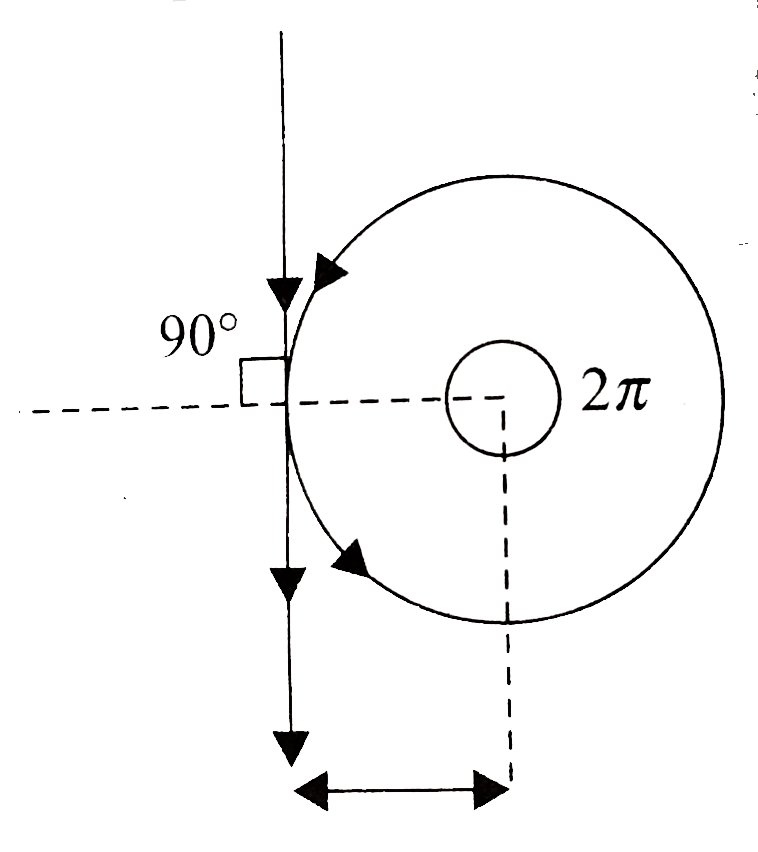In the previous problem, the maximum range of movement of the centre of the part of the circle from line AD in which charged particle of charge Q moves with a velocity v when (θ) is positive to when (θ) is negative is given by
±mv2QB
±mvQB
±2mvQB
±2mv3QB
The correct Answer is:B
An observation will show that when θ is positive and actually 90∘ angle formed will be 2π at the center and centre of the circle formed by the charged particle will be at a distance of radius of the circle from AD.
It will be also true for θ to be negative. (θ measured anticlockwise form normal AC).
Hence range is ±r=±mvQB.

Topper's Solved these Questions
- BOOK - CENGAGE PHYSICSCHAPTER - MISCELLANEOUS VOLUME 5EXERCISE - Multiple Correct34videos
MISCELLANEOUS VOLUME 5
- BOOK - CENGAGE PHYSICSCHAPTER - MISCELLANEOUS VOLUME 5EXERCISE - Linked Comprehension84videos
MISCELLANEOUS VOLUME 5
- BOOK - CENGAGE PHYSICSCHAPTER - MISCELLANEOUS VOLUME 3EXERCISE - True and False3videos
MISCELLANEOUS VOLUME 3
- BOOK - CENGAGE PHYSICSCHAPTER - Moving charges and magnetismEXERCISE - Question Bank20videos
Moving charges and magnetism
Similar Questions
Knowledge Check
- Question 1 - Select One
In the previous problem, if time period, T=2(π)mBQ where Q is the charge of the particle and m is its mass, the ratio of time spent by the particle in field when (θ) is positive to when (θ) is negative is given by
A(π/2+θπ/2−θ)B(π+θπ−θ)C(π−θπ+θ)D(π/2−θπ/2+θ) - Question 2 - Select One
The force acting on a particle of charge q moving in a uniform magnets field with velocity v is
Aparallel to both →v and →BBperpendicular to both →v and →BCparallel to →v and perpendicular to →BDperpendicular to →v and parallel to →B - Question 3 - Select One
A charged particle of charge Q and massm moves with velocity v in a circular path due to transverse magnetic field, B, then its frequency is
AQB2πmBQvB2πmCQmvB2πDvb2πQm
A charged particle is moving with velocity V in magnetic field of induction B . The force on the particle will be maximum when
View SolutionA charged particle (charge q) is moving in a circle of radius R with uniform speed v. The associated magnetic moment μ is given by
View SolutionA charged particle (charge q) is moving in a circle of radius R with uniform speed v. The associated magnetic moment μ is given by
View SolutionA charge particle (charge q ) is moving in a circle of radius R with uniform speed. v The associated magnetic moment m is given by
View SolutionA charged particle (charge q) is moving in a circle of radius R with unifrom speed v. The associated magnetic moment μ is given by
View Solution

